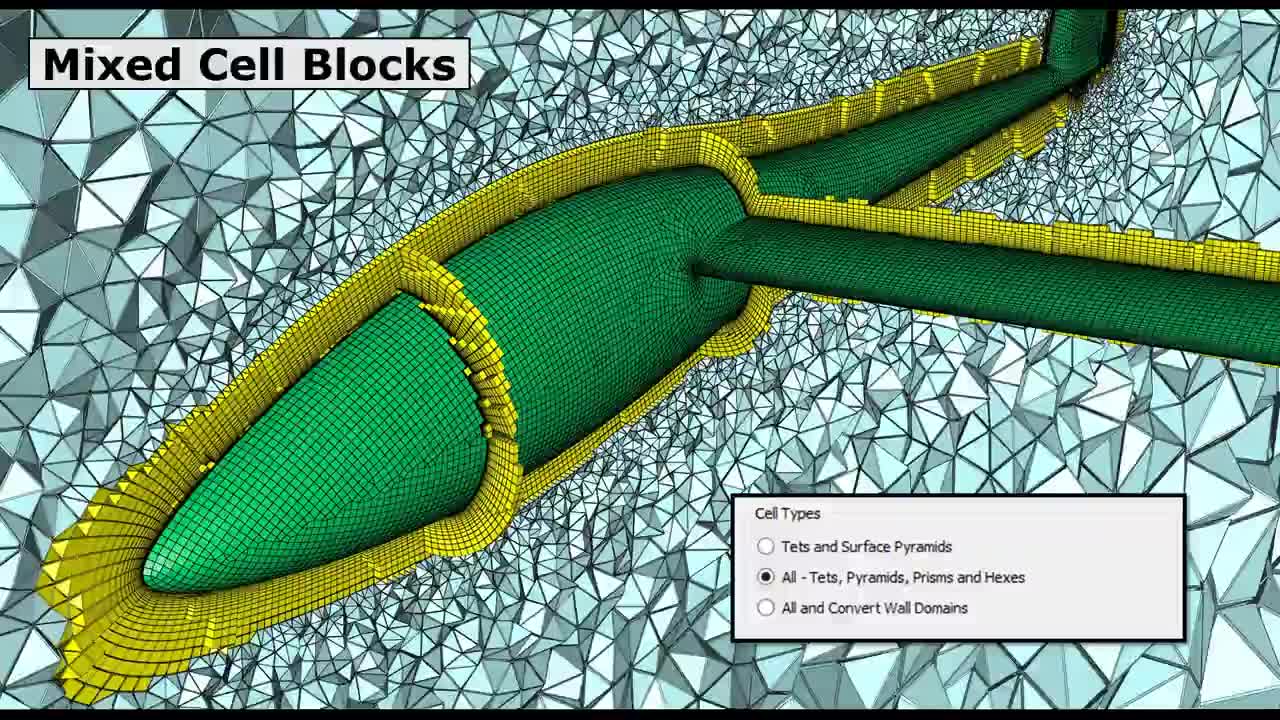Unstructured Quad and Hex Meshing

There are several advantages to adopting a multi-block structured meshing strategy. Examples include alignment of cell faces with the flow, improvements in solution convergence and accuracy, and greater control over the distribution of grid points. However, the models that engineers and scientists are using for their simulations are trending towards incorporating more detailed features; thus, making them more realistic and complex. In doing so, the task of creating multi-block structured meshes around these complex models has become more challenging and time consuming. Analysts like to retain many of the aforementioned benefits of multi-block structured meshes without the added overhead often associated with such meshing techniques. Pointwise, Inc. has tackled this problem with our unstructured quad meshing and hex meshing algorithms.
Pointwise users are leveraging these productivity enhancements to their advantage. Unstructured viscous meshes generated using our T-Rex (anisotropic tetrahedral extrusion) meshing algorithm have fewer cells, solutions converge more quickly and robustly, and results are more accurate. Many of these benefits come from applying simple changes to existing grids and taking advantage of the boundary-aligned quad meshing technique.
In this webinar, we highlight four features available in Pointwise: quad meshing for surfaces, farfield shape creation, unstructured hex meshing for boundary layer resolution, and volumetric sources. Starting with an existing aircraft geometry, we demonstrate the entire meshing process beginning with the generation of a quad surface mesh. Next, areas of high curvature are resolved, then farfield boundaries are generated using the latest shape creation utilities. The same shape creation utilities are then used to define a source that provides off-body volumetric grid refinement to help track flow features of interest. The volume mesh is generated using T-Rex, our unstructured viscous meshing algorithm, which extrudes stacks of flow-aligned hexahedra and prisms that smoothly transition to an isotropic tetrahedral farfield. Lastly, we examine the volume mesh cell quality using several of the many mesh quality metrics available to users of Pointwise.
Overview
- Automatically create unstructured quad-dominant surface meshes
- Extrude flow-aligned, hex-dominant boundary layer resolved cells using T-Rex
- Easily generate shapes to define farfield boundaries and sources
- Define off-body volumetric refinement regions using sources